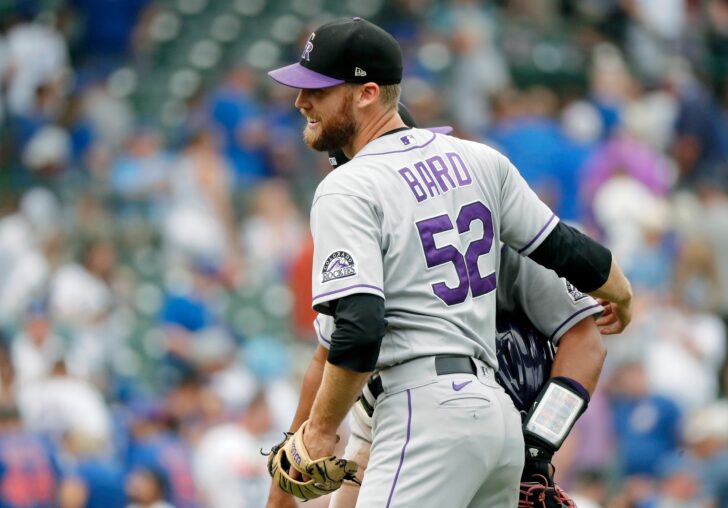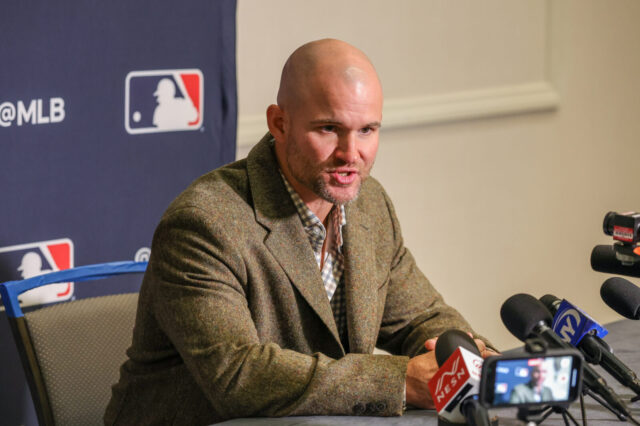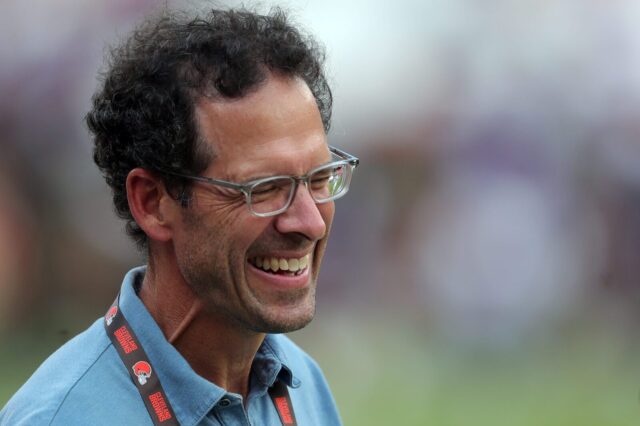If a Colorado Rockies pitcher has a stupendous season out in the wilderness where no one is watching, did it really happen?
It’s an age-old existential question.
And for Daniel Bard, it is a reality.
With little-to-zero fanfare, he put together one of the best relief pitching seasons in MLB and one of the best in franchise history, even though he wasn’t an All-Star.
The “weakest” part of his season from a statistical standpoint was that he recorded just 33, which is still good for sixth best in MLB and second best in the NL.
His 1.79 ERA, though, is way better than the only senior circuit reliever with more saves, Kenley Jansen, who posted a 3.38.
His park-adjusted 262 ERA+ falls just short of Gabe White’s all-time franchise record among qualified relievers at 268.
If not for Emmanuel Clase and Edwin Diaz also doing tremendous things, and if Bard’s teammates could have gotten him a few more opportunities, he’d be standing alone as far and away the most productive relief pitcher of 2022.
It was “more than I expected,” Bard admits with a laugh. “I came out of last year knowing I could pitch better, knowing I needed to make adjustments to my repertoire and how I use it. You go into the offseason and try to implement those changes and identify them and you don’t know if it’s gonna work or how well it’s gonna work.”
Well, it worked.
“I felt confident it was going to make me harder to hit… I didn’t realize it was going to as much as it has,” he says, again fighting back a smile.
Bard sees himself as both a living example for his teammates and perhaps even a microcosm of the roster’s ability to improve from within.
“Like a lot of guys who have down years, I feel like I had a lot of bad luck. I felt good on the mound the whole year, but I look up at the end and I’ve got a 5.00 ERA and it’s like ‘that’s not what we wanted,” he begins.
Because first, one needs to take stock of what went wrong and differentiating between fortune and performance can be a key in not over adjusting.
“There was some batted ball luck, and I probably had some good luck this year, so it balances out,” he continues. “But I’ve thrown the ball more consistently. The sinker has been a big part of that. Being able to manipulate the slider, and then just experience. Taking the mound, getting on a roll and feeling like every time I get on the mound it’s ‘this is what I do, let’s go do it.’ There’s no looking over your shoulder, or trying to be perfect, just trust your stuff and go do it.”
So, offseason adjustments (adding a sinker) and a slight change in approach combined with confidence and some better luck to go from a bad year to a great one.
“If the talent is there, and the willingness to make some adjustments to the way you use that talent, it’s not always an overhaul to make things drastically better from a results standpoint,” he says, applying this principle to the rest of the team as well as his individual performance.
“Sometimes it’s just a tweak. Sometimes it’s how you’re gripping a pitch, how you’re using your stuff, or for hitters a little approach change or trying to focus on one pitch better and maybe boom you see 10 more homers and 30 points on your average. There are little things that collectively, if each guy can identify those things, we get better.”
And what happens if they don’t?
“If you’re too stubborn in this game and won’t change, it’ll run you over,” he says.
Of course, Bard knows a little bit about that. He spent six years of what otherwise would or could or should have been his prime not on an active roster at all.
Famously, after dealing with a myriad of physical and mental challenges in the game, Bard went from 2014-2019 without appearing in a single MLB contest before being picked up by the Rockies.
“This organization has supported me from the day I showed up,” he says. “Buddy, the pitching coaches, Schmitty since he’s taken over, all the way up to Dick (Monfort) at the top. They’ve always supported me and even after a rough year last year they never wavered.”
The faith has been rewarded, but even then, there are those who wonder aloud and in print whether or not the team made a mistake by not trading him at the deadline. Still under contract through next season, if he continues to pitch well the questions might arise again.
But at 37 years old, is it reasonable to expect that he can keep this up? Or anything close to it?
Debate has raged over whether he is in for a crash in production as he approaches or if all that time off meant he has saved “bullets” as it were and might have more than a few years left in him.
Let’s ask the man who is actually attached to the arm.
“I feel good,” he says, going on to possibly invent a new-yet-clearly-important metric, “I judge it on how much I’m in the training room compared to everyone else. I feel like I’m at a good level. It’s usually the same or less.”
He has an excellent DITRAR (Days In Training Room Above Replacement) since he has joined the club.
“There’s always some maintenance that needs to go on. There’s no one thing I see hampering me. Obviously as a pitcher, any one pitch could be your last. That’s something I realize. I try to appreciate every pitch I get to throw. At the same time, I feel good I’ve stayed healthy the last few years.”
The Colorado club is fairly criticized for an overreliance on internal improvement and regularly coming back to the public-facing message that, in essence, “our guys just need to play better.”
It can be a frustrating refrain for fans but in this particular case, that mentality seems to have played a direct impact in getting Bard back to firing on all cylinders.
“They said, ‘we think you’re a better pitcher than what your numbers show.’ and everyone seemed to believe that and be on the same page,” he says. “That belief going into this year helped me. They put me back in the closer role. They didn’t have to do that. I’m appreciative of all the support and glad I get to continue this relationship and hopefully see this team turn into a winner next year.”



